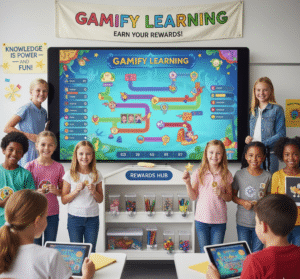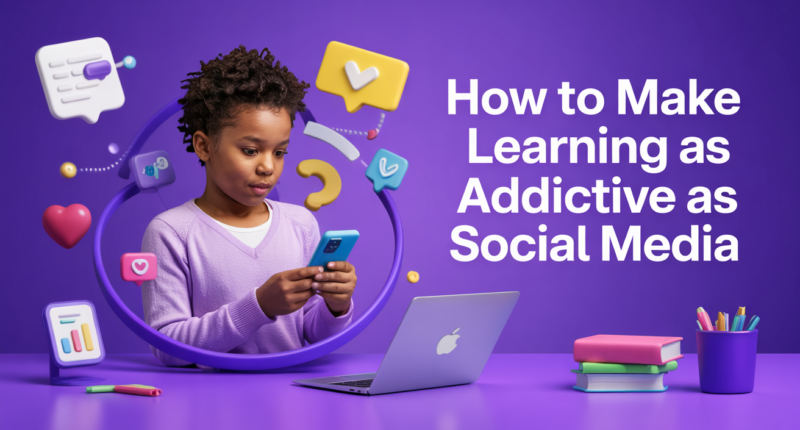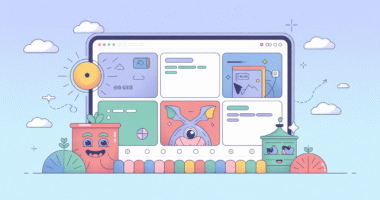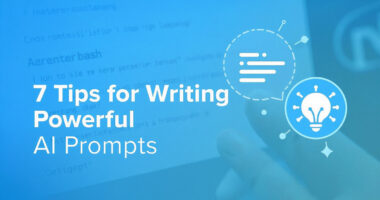Learning on our phones often feels more exciting than studying. However, educators can use the same tricks that social media apps do to make lessons fun and habit-forming. For example, social media gives unpredictable rewards (like a random “like” or notification) to keep us hooked. We can mimic that by giving students surprise points or badges for completing tasks. Moreover, combining game elements, peer interaction, and multimedia can make study time exciting.
Gamify Learning with Rewards

First, turn study tasks into challenges. For instance, add points, levels, and digital badges to classroom activities. In fact, using game elements like points, leaderboards, and badges in education is known to boost motivation. Additionally, apps such as Duolingo award points randomly and use progress streaks to keep learners engaged. This taps into the “goal gradient” effect, where students push harder as they see their progress. For example, students log in daily to maintain a streak. Teachers can do similar: set up a class scoreboard or give rewards for milestones to tap into this psychology.
-
Kahoot! – A live quiz game that makes review sessions fast-paced and fun for the whole class.
-
Quizlet – Interactive flashcards with game modes and leaderboards that let students study together.
-
Duolingo – A language app that uses points, badges, and daily streaks to make practice addictive.
-
Other Apps – Socrative, Classcraft, and similar tools gamify lessons with quizzes, role-play, or interactive activities.
Add Social and Collaborative Elements
Next, add social features. Learning is more enjoyable in a group. For example, discussion forums or group projects let students share ideas and help each other. In fact, platforms like Kahoot and Quizlet let learners compete and collaborate in real time, creating a sense of community and fun. Similarly, using class chat apps or online boards for Q&A means everyone can get immediate peer feedback. These social bonds make studying feel like a shared adventure. Also, teachers can encourage team challenges or peer teaching to spark friendly competition and support.
Use Visuals, Instant Feedback, and Microlearning
Another key tactic is to make content visual and immediate. Social feeds use bright images and video to grab attention. So, use colorful charts, animations, or videos to explain ideas. In fact, people remember information better when it’s paired with visuals. Also, quick quizzes or flashcards give students instant feedback – they see right away if they are correct. Furthermore, keep lessons short and regular. Microlearning – short daily lessons – creates a “fear of missing out” so students habitually check in. For example, a daily five-minute quiz or word challenge can get students logging in every day.
Classroom Strategies That Match Digital Tricks
In the classroom, teachers can copy social app techniques. For instance, use live polls or smartphone quizzes so students get immediate results (which feels rewarding). Additionally, provide choices: let students pick projects or roles, which increases ownership. Importantly, praise effort and resilience. A study found learners who were not penalized for mistakes kept trying until they succeeded – the “Super Mario Effect”thinkdom.co. Therefore, emphasize that mistakes are okay and part of learning. Also, mix up lessons: blend lectures with hands-on projects or peer teaching. Edutopia notes that giving students multiple ways to share ideas (spoken, written, artistic) leads to higher engagementedutopia.org.
In summary, making learning addictive means making it fun and social. Ultimately, when lessons have game elements, social interaction, and instant feedback, students stay engaged. As one expert says, using these strategies makes learning “fun, interactive and rewarding”. In short, by mimicking the best parts of social media, educators can turn study into something students want to do. When lessons offer enjoyment and community, students naturally come back, just like for their favorite apps.









